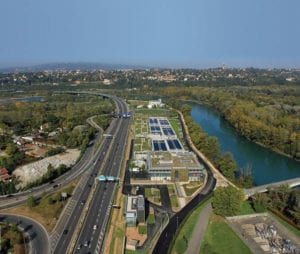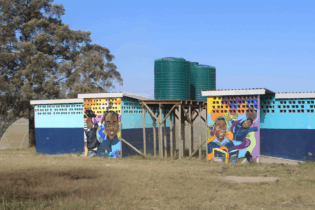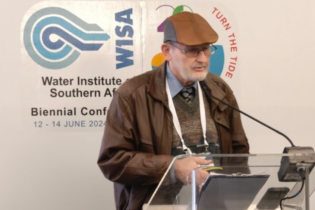The steady growth in the volume of sludge generated by water treatment is linked to both demographic changes and an increase in urban sprawl.
This situation puts additional stresses on municipalities and can lead to tighter constraints within the water industry.
Water&Sanitation Africa takes a look at what Degrémont can offer the industry in terms of sludge management and treatment.
A key aspect to the treatment of sludge is to reduce its volume and transform it into a recoverable product. Degrémont Technologies, provider of high-performance water, wastewater and sludge treatment solutions,carefully evaluates each project with its design engineers and client, and looks at the entire treatment line to find ways to improve the final destination of treated sewage sludge.
According to Remy Jaffray of Degrémont, the company’s ultimate aim is to support local authorities in the management of sludge and by-products treatment, which must be recycled, eliminated or recovered. It offers various technical solutions which implement proprietary or licensed processes for:
- sludge thickening and dewatering
- sludge digestion – in order to reduce it in size, increased dryness through dewatering, long term stabilisation and the recovery of green energy from the sludge in the form of biogas.
- thermal, missed or solar drying
- destruction through incineration.
Sludge thickening
The thickening is the first step, often unavoidable, and aims to reduce the volume of sludge from the water system. It optimises the steps of conditioning, stabilisation and dehydration by reducing the sizes of structures and operating costs. Processes used are the gravitational settling thickening (thickening static) and dynamic thickening (concentration implementing dynamic energies).
Sludge dewatering
Sludge resistance to filtration and compressibility factor is often too high to ensure an optimal separation of water and matter. In order to achieve this, one must first break the cohesion of colloidal mud and artificially increase particle size. This is the purpose of conditioning and the bases of satisfactory operation of the dehydration plant, to achieve the objectives in terms of final dryness, performance and operating costs.Two techniques areavailable, the first is dewatering by electro-osmosis and the second dewatering by pre-liming before centrifugation.
Sludge digestion generated by water treatment
The process of anaerobic digestion offers numerous advantages. These range from the reduction of the sludge quantity, the increase of the dryness in dehydration, the long-termstabilisation leading to a reduction of the nuisances and the valuation in green energy by biogas production.
According to the quantity and nature of the sludge to be treated, various types of digestion can be utilised:
- mesophilic digestion at 37°C
- Digelis Smart –Mesophilic digestion and storage of integrated biogas
- thermophilic digestion at 57°C
- Digelis Duo –thermophilic digestion at 57°C coupled with mesophilic digestion at 37°C
- Digelis Turbo – thermal hydrolysis combined with mesophilic digestion at 37°C.
Sludge drying
Drying is necessary because of the limitations encountered in the mechanical dewatering of sludge.
Sludge has a specific behaviour that influences the thermal drying processes depending on the dryness reached. Generally, heat is transmitted in three ways: conduction, convection and radiation.
These heat transfer modes applied to sludge will result in different technologies including:
- thermal drying at low temperature by bands
- drying the mixed combining a thin-layer dryer and a belt dryer with hot air
- solar drying.
Digestion: current stakes
Europe has undertaken to drastically reduce its greenhouse gas emissions setting a target of producing 20% of its total energy from renewable sources by 2020.
Sludge digestion, which was previously considered as a just a sludge treatment technology, is currently perceived as an alternative to fossil-based energy sources.This therefore constitutes an additional commitment for communities seeking sustainable energy solutions thereby contributing to the effective achievement of the objectives similar to those set by Europe, which can be beneficial to South Africa.
As a by-product of water treatment facilities, sludge can contain more than 95% of water as well as suspended solids and other residue. Operators are committed to reducing these water volumes in order to more easily discharge and recover the sludge. To reduce the volume of sludge there are three broad categories of processes depending in the final dryness of sludge required, namely thickening, dewatering and drying.
Degrémont’s Dehydris Twist is an innovative mechanical dewatering process holding both filter press efficiency and centrifugal automaticity. It combines advanced dewatering technology with ease of operation. Developed for drinking wastewater production and wastewater treatment, it is a multipurpose solution that achieves a 30% reduction in sludge mass compared to conventional dewatering. The quality of the dewatered sludge obtained gives access to multi-channel solutions for their recovery and allows volumes to be reduced for transportation. Because it produces auto-thermal sludge it exempts from an energy-intensive thermal-drying stage before incineration. It is a solution tailored to the challenges of energy efficiency and greenhouse gas emission reduction.








